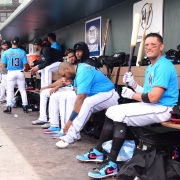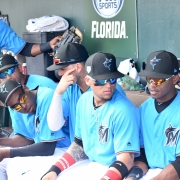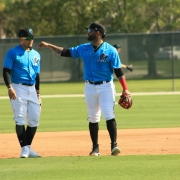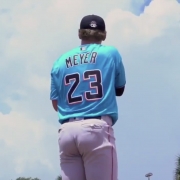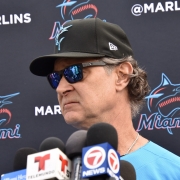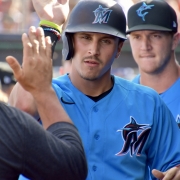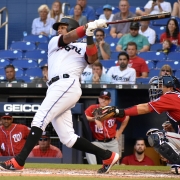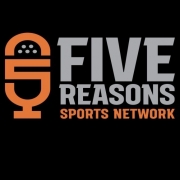5 Predictions for the Miami Marlins 2020 Roster
Miami named Sandy Alcantara the Opening Day starter earlier this week, answering one of the big questions for the Marlins 2020 roster.
Alcantara’s final 11 starts of the 2019 season, coupled with an impressive spring/summer, has propelled the 24-year-old to the front of the rotation. Spots 2-4 will likely feature Caleb Smith, Pablo Lopez and Jose Urena in some order.
Marlins manager Don Mattingly has mentioned the 30-man roster will be pitcher-heavy. He’s considering carrying as many as 17 hurlers to Philadelphia to open the season. That leaves 13 slots for position players on the 30-man set.
The Marlins won’t fully cut down their roster until after the two exhibition games in Atlanta next week. With that in mind, here are five predictions for the Marlins 2020 roster come July 24th.
Miami Marlins 2020 Roster – Fifth Starter Prediction
For the fifth starter, there’s a four-man race. Jordan Yamamoto, Elieser Hernandez and Robert Dugger all have Major League experience, whereas Nick Neidert would be making his MLB debut if he’s it.
The prediction for Opening Day is Yamamoto. Yams tossed back-to-back seven-inning shutouts to open his MLB career. In 2019, he made 15 starts and threw 78.2 innings, posting a 4.46 ERA and 1.14 WHIP with 82 strikeouts. He’ll need to improve upon his 4.1 BB/9 and 1.3 HR/9 rates, but his track record in the minors indicates he will.
For the others, Hernandez and Dugger can both transition to the bullpen. Neidert probably won’t break camp with the club, but he could be the first pitcher called up should the rotation suffer injuries.
Bullpen Prediction
If Yamamoto takes the 5-spot, Hernandez and Dugger likely land in the bullpen as long relievers. Mattingly has mentioned the possibility of a piggyback with the fifth starter, and both of those pitchers could fill that role.
The Marlins turned over much of their terrible bullpen from 2019. Free agent additions Brandon Kintzler and Yimi Garcia should be backend staples, with Kintzler taking the closer role. Non-roster invitee Brad Boxberger stands as another veteran option with closing experience.
Adam Conley, Sterling Sharp, Ryne Stanek and Drew Steckenrider also seem like locks.
Predicting the final three arms for the ‘pen: Jeff Brigham (if he’s fully healthy), rookie Alex Vesia and Nick Vincent.
Brigham didn’t pitch in the spring thanks to a right bicep injury, but he sports maybe the best slider on the staff. Vesia has impressed and consistently thrown strikes. Mattingly called Vincent an “experienced, strike-throwing veteran,” which is key.
Should Brigham’s injury linger, look for Aaron Northcraft (or Josh Smith) to take his spot. If Mattingly wants a third left-handed reliever, he may swap Vincent for Stephen Tarpley, who Miami acquired via trade from the Yankees in January.
Dark horse options include prospects Jordan Holloway and Jorge Guzman. Both are starters, but they’ve impressed during camp and could be bullpen arms if need be.
Outfield Prediction
The unfortunate reality is that the Marlins are missing two outfielders who, in spring, figured to play significant roles. Matt Joyce and Lewis Brinson would have competed for right and center field respectively. Pulling those two from the competition simplified Mattingly’s decision making.
The prediction for the starting outfield on Opening Day is: Corey Dickerson in left, Jonathan Villar in center and Harold Ramirez in right. Monte Harrison will make the team and rotate between center and right. Garrett Cooper will see time in right and as DH.
While Ramirez is aided by Joyce’s absence, Mattingly called him “the most impressive overall” of the right field candidates. “He’s a guy people don’t give as much credit to. He’s been working hard in the outfield to get better.”
Magneuris Sierra, who is out of minor league options, should also make the team. His versatility, speed and defensive acumen carve out a role for him early, though he could be replaced once Joyce returns. He could also be among the cuts when the team pares down from 30 players to 28 and 26.
“Mags is a guy that we continue to see develop,” Mattingly said. He envisions Sierra as someone who can “[s]teal a bag, [be a] defensive replacement, you’ve got the 10th inning-type thing. There’re some scenarios in this type of setting. That creates a different role.”
Mattingly did say recently that both Joyce and Brinson will have a chance to play this year and that both players are optimistic and upbeat. Their delay makes the first few weeks of the season important for both Sierra and Harrison if they want to stick with the club.
Prospect Jesus Sanchez could find a role on the big club as well, if Mattingly wants a left-handed bat with pop off the bench.
Infield Prediction
The Marlins 2020 roster along the infield has been fairly set since the offseason. Holdovers from 2019 include Jorge Alfaro, Isan Diaz and Miguel Rojas. Offseason addition Jesus Aguilar remains the odds-on favorite for first base. And Brian Anderson seems poised to retake his regular role at third.
Cooper will spell Aguilar at first from time to time, and super utility Jon Berti can plug the other holes. Villar will likely spend some time cycling through middle infield spots in addition to centerfield.
For Diaz, the start to the season is particularly important. Mattingly has called Diaz “the guy” and “the second baseman of the future” but the presence of Villar should keep pressure on him to produce. His minor league track record indicates he’ll hit.
New bench coach James Rowson said he’s been impressed by Diaz. “I love the swing. He does a lot of things that work well.”
Should Aguilar struggle out the gate, first base prospect Lewin Diaz might get an early call-up. He’s a powerful, sweet-swinging lefty who’ll be a mainstay in the lineup for years to come.
Local product Eddy Alvarez, a switch-hitting utilityman, could find a role should injuries pile up.
Miami Marlins 2020 Roster – Rotating Positions
The final prediction for the Marlins 2020 roster is that there will be rotating positions. With this group, there’s fluid nature to the lineup. GM Mike Hill has assembled a group of players who can play multiple positions, and this versatility affords Mattingly the flexibility to shuffle players based on matchup and who’s hot.
Lineup fixtures like Villar, Cooper, Rojas, Ramirez and Anderson can bounce around the diamond and outfield. The addition of the designated hitter to the NL gives Mattingly another bat, and multiple players can fill that role as well.
Even the construction of the bench should feature players who can be deployed across a number of spots. Berti can play all over. Sierra can man each outfield position. Same for Harrison.
The ability for the roster to rotate positions means Mattingly can optimize the lineup card almost every day.
